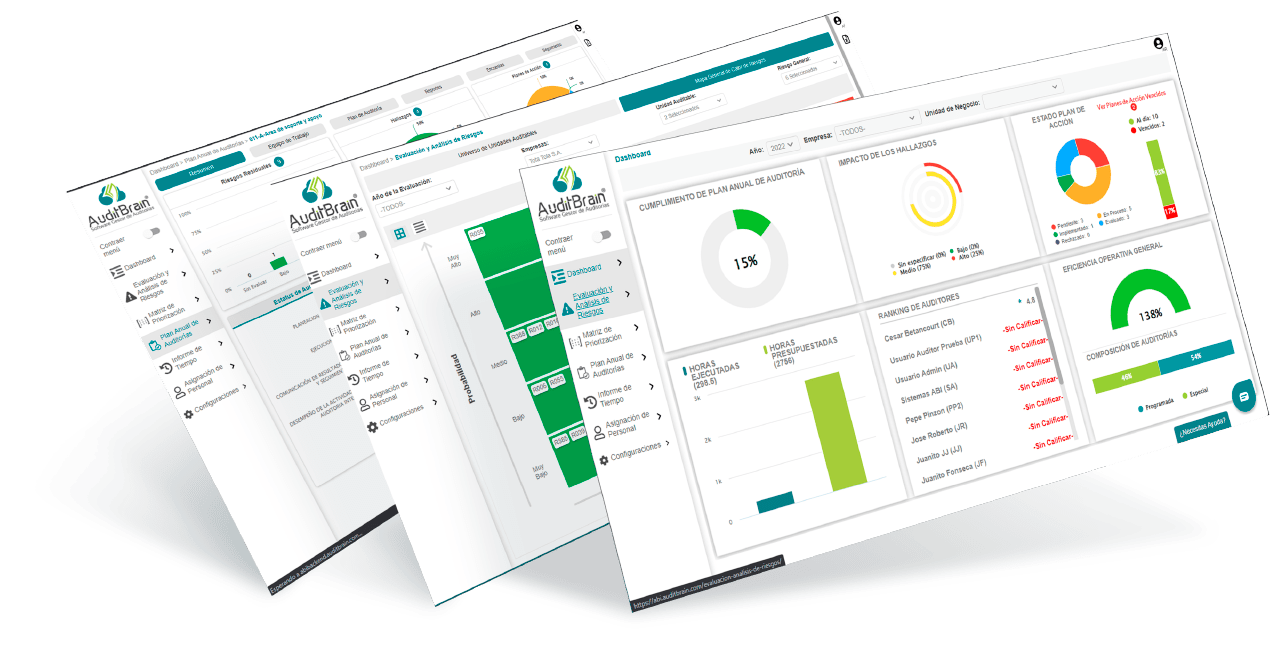Internal auditing is a critical function within any organisation, as it provides an independent assessment of internal processes and controls. One of the most effective tools for ensuring the efficiency and effectiveness of this function is performance indicators. These indicators not only measure the progress and effectiveness of audits, but also help identify areas for improvement and ensure the achievement of strategic objectives. The main aspects and benefits of indicators in internal auditing are detailed below.
Definition of Performance Indicators
An indicator is a measurable value that demonstrates how effectively internal audit is achieving its objectives. For indicators to be useful and effective, they must meet certain criteria:
1. Specific: The indicator must clearly specify which aspect of the internal audit process it is measuring.
2. Measurable: It must be quantifiable to allow for accurate assessment.
3. Achievable: Ensure that the indicator is realistic given the context and available resources.
4. Relevant: The indicator must be aligned with the strategic objectives of internal audit.
5. Time-bound: There must be a defined time frame for achieving the indicator’s objective.
Types of Indicators in Internal Auditing
1. Compliance Indicator: Measures the progress of the annual audit plan and demonstrates the effectiveness of the programme and progress towards specific goals and objectives.
2. Efficiency Indicator: Evaluates the efficiency of audit execution by comparing actual hours spent with budgeted hours. This indicator is crucial for monitoring resource utilisation and audit team productivity.
3. Impact of Findings: Quantifies findings according to their impact (low, medium, high). This indicator allows corrective actions to be prioritised based on the severity of the findings.
4. Status of Action Plans: Measures the level of compliance with the activities required to implement the action plan by the audited area. This indicator is essential to ensure that audit recommendations are implemented in a timely and effective manner.
Benefits of Using Indicators in Internal Auditing
1. Monitoring and Control: Indicators enable continuous monitoring of audit progress, facilitating early identification of deviations and implementation of corrective measures.
2. Continuous Improvement: By constantly evaluating results and performance, indicators help internal auditing evolve and adapt to changes in business processes, ensuring that best practices and management models are implemented.
3. Alignment with Strategic Objectives: The indicators ensure that internal auditing is aligned with the organisation’s strategic objectives, providing valuable information that contributes to decision-making by senior management.
4. Transparency and Accountability: By measuring and reporting performance on a regular basis, indicators promote transparency and accountability within the internal audit function and towards stakeholders.
Conclusion
The design and implementation of management indicators in internal auditing are essential to ensure that this function meets its objectives and adds value to the organisation. Indicators enable accurate performance evaluation, facilitate the identification of areas for improvement, and ensure that internal auditing is aligned with the company’s strategic objectives. Implementing these indicators effectively is a crucial step for the success of internal auditing and the long-term sustainability of the organisation.
For more information on how to implement indicators in your internal auditing function, consult specialised resources and tools such as AuditBrain, which offer advanced solutions for efficiently monitoring and managing audit plans.

